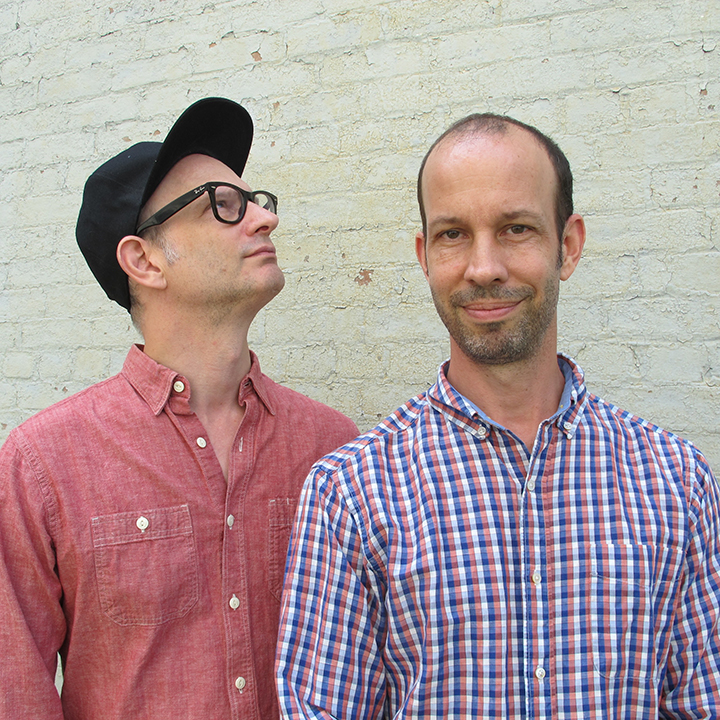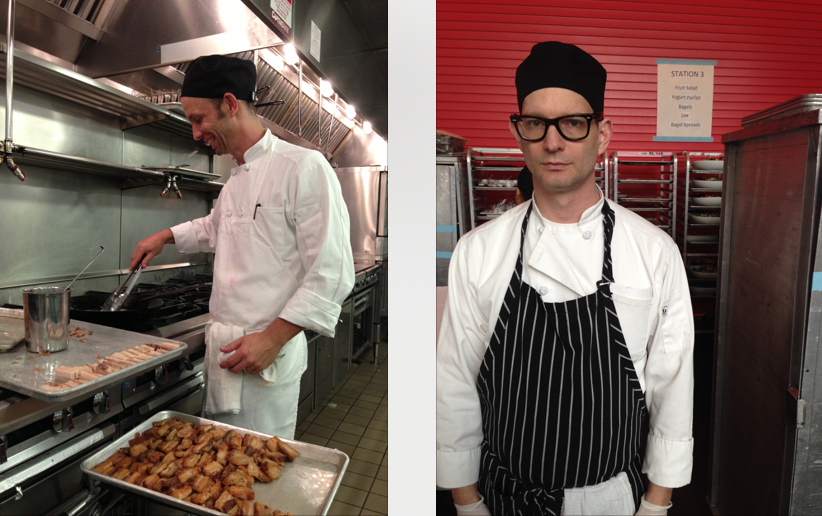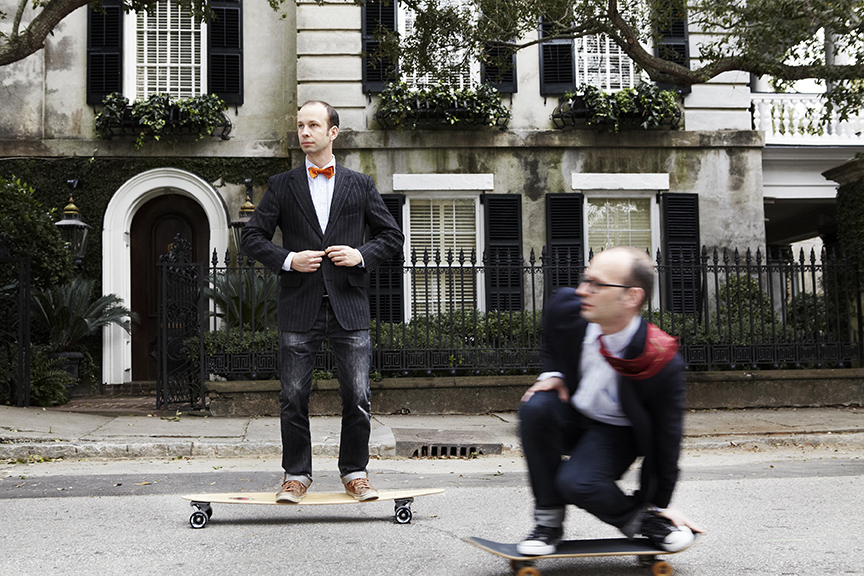Charleston culinarians Matt and Ted Lee are famous for their cookbooks, food and travel journalism, television appearances, and overall contributions to promoting and elevating Southern cuisine. But they have been, perhaps, less well known for their insider’s knowledge of the catering industry.
That changed with the publication of Hotbox: Inside Catering, the Food World's Riskiest Business, a firsthand journey through the catering profession. The Lees spent more than three years working in catering, documenting its challenges and hard-earned successes. Here, they explain why catering is traditionally underappreciated in the wider culinary world, what the most common catering “rescues” are, and what surprises they have for attendees at the 2020 Catersource show in Las Vegas, where the Lees are featured in two separate sessions (see sidebar for more information).
(This interview has been edited for brevity and clarity.)

Ted Lee and Matt Lee
Catersource: What was the inspiration to write Hotbox?
Ted: We observed a catering team assisting a friend of ours, Executive Chef Steven Satterfield of Miller Union in Atlanta, at the James Beard House in New York City. It’s a townhouse with a famously small, hot, and difficult kitchen.
Steven knew the kitchen would be a challenge, so he brought a friend named Patrick Phelan, who at the time was executive chef for Sonnier & Castle catering in New York City. Patrick brought his two lead chefs [Juan Soto and Jorge Soto], and they came to that event never having worked in the James Beard House, never having cooked with Steven, and didn’t know what was on the menu—yet they had a fearlessness about that scenario that impressed us.
They were intuitive and resourceful in a way we’ve never seen. When they ran out of griddle space, they just improvised griddles by cranking up the burners on the stove and putting a sheet pan over it to sear rabbit loins and oxtail crépinettes. They allowed Steven to just expedite the food because they took care of everything else—they were like special operations chefs.
We never really had any exposure to the catering industry before that, and afterward we told them they did an amazing job. Juan Soto said, “You have to understand that was only 75 covers. We don’t start sweating until 750.”
Matt and I realized this is a kitchen culture we knew nothing about—and we’ve been writing about food for 20 years! So, we joined Patrick’s team at Sonnier & Castle for three-and-a-half years as entry-level kitchen assistants, working for $10 an hour in the prep kitchen, and $25 an hour for off-premise events, and we just lived it—the book is the result of that.

CS: Why has catering been underappreciated from a culinary perspective?
Matt: It goes back decades to when catering was frequently reduced to the lowest common denominator, and so your average wedding banquet, for example, was almost guaranteed to be poor-quality food, texture, flavor, and temperature. But today, people have rallied around food and identify with it as part of their culture. Inevitably the catering industry is catching up with that. We want to show in our book that catering at a high level is every bit as good as restaurant quality.
Juan Soto said as long as he had aluminum foil, Sterno, and restaurant-grade plastic wrap, he could get through any situation, especially if certain tools were forgotten.
CS: What kind of person did you observe thriving in a catering environment?
Ted: Someone with a MacGyver-like sensibility, knowing what materials they have on hand, and making the best of each situation. People who love that kind of challenge are the ones who perform best in off-premise conditions. Juan Soto said as long as he had aluminum foil, Sterno, and restaurant-grade plastic wrap, he could get through any situation, especially if certain tools were forgotten.
Juan has a technique for MacGyvering a whisk by rolling up an aluminum foil pan into something like a rope, then splaying one of the ends with a chef’s knife. Those same aluminum pans are great as an emergency strainer—you just poke holes in it with a pen. And the basket from a floral display comes in handy when you need to dust the desserts with powdered sugar but forgot a sifter.
There’s a story in the book where Juan describes working for a new chef who said, “I’m a restaurant chef and we’re going to use real equipment to cook.” Meaning, they weren’t going to rely on traditional, proven catering equipment for offsite events. They rented four ovens and drove them to a bar mitzvah in upstate New York to feed 1,500 people. The ovens blew all the electricity in the house, so they had no power to cook. Fortunately, they brought three hotboxes and a lot of Sterno—catering staples—and improvised their way through it.
CS: What was the most common catering “rescue” you witnessed while working for Sonnier & Castle?
Matt: Mostly special meal requests that weren’t made clear in advance.
Ted: For example, we’d have 40 vegetarian RSVPs and then all of a sudden, we need 46 because of unscheduled requests during the event. We’d need to create six vegetarian meals on the spot while the plating was already happening. It’s another situation where if you have the right people on your staff, they’ll dive right into the mise en place that’s left over from the cocktail reception and the first course, creating something out of nothing.
Another common situation is after dessert is served and we’re packed to leave, the party planner says they need special meals for the host and hostess, or other VIPs. We have to unpack quickly and improvise those special meals on the spot. The rescues really don’t cease until you’ve left the property.
CS: What can attendees at the 2020 Catersource show in Las Vegas expect from your sessions?
Matt: We’re demonstrating several hands-on techniques for maximizing the usefulness of a hotbox, like how to reheat proteins, vegetables, and pastas, and how to set up hot and cold temperature zones within the same hotbox. Also, we’ll show a few tricks like stacking two hotboxes on their sides, which is perfect prep height if you need extra workspace at an event.
[Editor’s note: This is the Hotbox 101 session on the tradeshow floor’s Hands on Stage, Thursday, March 12. Additionally, after this interview was conducted, the Soto brothers agreed to present the session with Matt and Ted.]
Ted: We have another session about what we learned working for Sonnier & Castle and writing Hotbox. We’ll talk about how a caterer can profitably use special requests from clients as R&D for new menu items, and we’ll explain how regional factors can define catering practices around the country. For example, in South Carolina, it’s mandatory to have hurricane insurance for special events between June and November. In Los Angeles, outdoor grilling for events is common because the weather is reliable. And in New York City, there are so many contingencies and variables that don’t exist elsewhere, from the traffic to the overall crazy factor, that you have to be prepared to handle anything.
[Editor’s note: this is Lunch & Learn: Hotbox, with Authors Matt & Ted Lee on Tuesday, March 10. It is a separately ticketed event and includes lunch.]
Matt: Many caterers have an inferiority complex about their profession and view catering as its own bucket, separate from the wider food culture. I hope they’re able to read Hotbox and hear us speak at Catersource so they’ll understand catering is very much a part of America’s food culture and should be talked about on the same level of innovation and creativity as the best restaurants and home cooking. There currently is no James Beard Award for caterers, but we have a feeling there might be in the future.

See Matt Lee & Ted Lee at Catersource!
The brothers Lee will be presenting two sessions at Catersource, and also sign copies of their book, Hotbox: Inside the Food World’s Riskiest Business.
Tuesday, March 10 from 11:50 to 1:15
Lunch & Learn: Hotbox, with Authors Matt & Ted Lee
A three-course lunch plus the personable Lee brothers, with time for Q&A at the end. This is a separately ticketed event.
Thursday, March 12 from 10:30 to 11:30
Hotbox 101 with Matt & Ted Lee AND Juan & Jorge Soto
New York City catering wizards Juan & Jorge Soto will join Matt & Ted to reveal Tips and tricks for best utilization of a hotbox, on Catersource’s Hands on Stage on the tradeshow floor.
 TBD
TBD
Hotbox Booksigning
Hotbox will be available in the bookstore all days of the show, and a booksigning will also be scheduled. Watch for details, as well as signage at the show.




